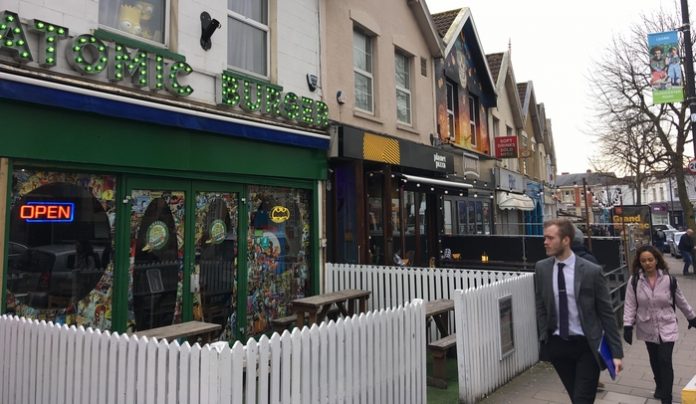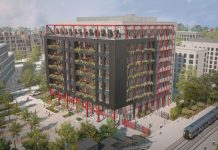St Pauls, Montpelier, Stokes Croft… parts of the city once regarded as undesirable are now deemed “edgy” and fashionable. How does the process happen, what part do shops play in the metamorphosis, and where might gentrification strike next in Bristol? By Stuart Williams, Director of Williams Gunter Hardwick.
A decade or so ago, Southville acquired the (somewhat tongue in cheek) nickname amongst estate agents of “Lower Clifton”. Slowly but surely, the streets of Victorian houses – long considered to be a respectable “working class” part of the city – started attracting a new breed of occupier: younger, professional, upwardly mobile. House prices started to climb steeply and new, trendy names started to appear above local shops.
A big part of the renaissance in this part of the city can be put down to the inspired decision by local architect George Ferguson to save and redevelop 40,000 sq ft of derelict space at the former Tobacco Factory on North Street. Suddenly there was a focal point to the area that made it interesting and fashionable. But a series of other factors were at play too: not least young people no longer being able to afford to buy or rent in places such as Clifton and Redland (where their parents’ generation might have gone) and looking for the next closest thing they could find that gave them easy access to the various jobs offered in the city centre.
But the shops that came in behind the newcomers played a big part of the process: the coffee shops, bars, restaurants, takeaways and independent retailers that reflected their tastes and reinforced their feeling of belonging. The process has continued for a number of years, with other parts of Bedminster starting to enjoy the ripple effect.
Next in line will be East Street which already has a number of interesting independent occupiers such as the cafe operator Grounded who have joined existing and established specialists such as Taunton Leisure, Calico the fabric retailer and Park Furnishers, all of who will benefit from the influx of new residents to part of south Bristol. This was a shopping suburbs in freefall after the loss of stalwarts like Woolworth’s. The creation of “Bedminster Green” along with other developments close by will bring around 4,000 new people to the area, and they’ll be the customers of these and other new shops that will doubtless follow in their wake.
People now want to shop close to home. Many don’t even have cars and will shop several times a week rather than go for one supermarket haul. That has helped a new generation of retailers to compete – if not on price, then on quality and character as well as convenience.
Anyone who has walked up Gloucester Road on a Saturday morning will testify to the vibrancy that the artisan bakers, ethically sourced butchers and non-chain coffee shops have brought – adding to the virtuous circle of professional people moving into the area. The younger generation is also looking for exciting new cuisines, and – again – the arrival of specialist restaurants like Thali Cafe, Pieminister, Souk Kitchen and Biblos, in our newly gentrified shopping areas is adding to their identity and enabling local residents to eat close to home.
Stokes Croft and Montpelier are feeling the impact. All are now deemed edgy and attracting a new generation of occupants.
Another big dynamic in the gentrification process has been the huge influx of students. They have often been the early pioneers into new areas, drawn there by cheaper rents, encouraging convenience stores and fast food outlets to open and making an area feel “safe”. Once they have broken new ground, often staying on after they have graduated, others follow.
Where next? My tip is to follow the money. Young people are having to move into “pioneer” territories like Brislington, Fishponds and Redfield where the property is cheaper but the houses are perfectly pleasant and there is good access into the city. As people move in, interesting retailers will follow to occupy places like Sandy Park Road, Fishponds Road, and Church Road… encouraging more people to move there and fuel the spiral.
Of course, not everyone thinks “gentrification” is a good thing. People who have lived there for generations will sometimes resist the change in culture of their neighbourhood. Rising property prices make it more difficult for their children to continue to live locally. But it does lead to investment in an area with old houses being refurbished and new “infill” builds adding to the population density – all adding vibrancy and to the choice of places in our great city where people aspire to live.
Yes, Clifton and Redland might have been the places of choice for our parents’ generation… but who can afford to live there now?




















